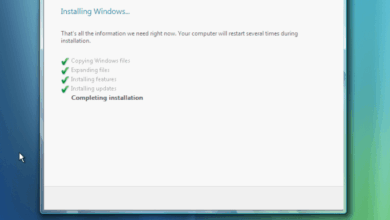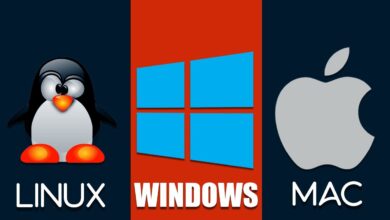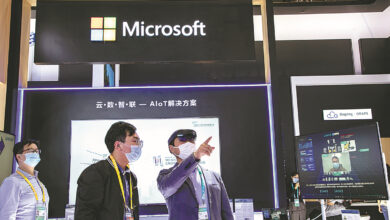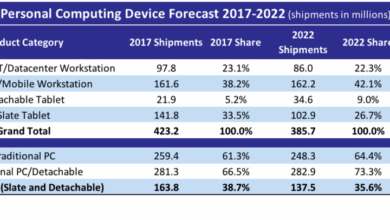Vista Powers Big Boost in PC Sales
Vista powers big boost in PC sales, marking a significant turning point in the PC market. This era saw a flurry of innovation and a shift in consumer perception. We’ll explore the key features of Vista, its impact on sales figures, and how consumer response shaped the market landscape during its release.
The introduction of Vista, with its new graphical user interface and features, generated a lot of buzz and excitement. While some aspects were lauded, others were met with criticism. This piece will delve into the detailed impact of Vista, considering both the positive and negative feedback.
Vista’s Impact on PC Market
The PC market, prior to Vista’s release, was experiencing steady growth, fueled by the widespread adoption of Windows XP. Consumers were comfortable with the familiar interface and functionalities of XP, leading to a robust demand for PCs. Hardware manufacturers focused on delivering faster processors, larger hard drives, and improved graphics capabilities, catering to the needs of a user base accustomed to a stable and reliable operating system.Vista, however, marked a significant shift in the landscape, aiming to introduce a range of new features and functionalities that promised a more powerful and intuitive computing experience.
The underlying technology was intended to streamline the user interface and deliver enhanced performance, but its impact on consumer perception and hardware sales proved more complex than anticipated.
Historical Context of the PC Market Before Vista
The PC market, before Vista’s release, was characterized by the dominance of Windows XP. XP provided a stable and familiar platform for users, encouraging widespread adoption and driving hardware sales. This era saw a focus on improved processor speeds, larger hard drives, and better graphics cards, mirroring the increased demands of software applications and multimedia content. The market was relatively mature, with established players and well-defined consumer expectations.
Key Features and Functionalities of Vista
Vista introduced several key features designed to improve user experience and system performance. These included enhanced security features, improved graphics capabilities, a redesigned user interface, and a revamped file system. The Aero interface, with its visual effects, was a key differentiator. Improved search capabilities and a new media player also aimed to streamline user interactions. However, these innovations also brought new complexities to the system, sometimes requiring significant hardware upgrades.
Vista’s Impact on Consumer Perception of PCs
Vista’s release was met with a mixed reception. While some users were impressed by the new features and functionalities, many found the operating system to be resource-intensive, leading to performance issues on older hardware. The perceived sluggishness and complexity of the interface contributed to a negative perception among some consumers. The emphasis on visual effects, while appreciated by some, also proved problematic for users with less powerful systems.
Vista’s recent boost in PC sales is pretty impressive. It seems like the tech world is buzzing with innovation, with companies like Colsa even taking on the challenge of building a custom Apple Xserve supercomputer for advanced computing needs. Colsa to build apple xserve supercomputer This could lead to some serious breakthroughs, which might just further fuel the already strong demand for PCs and Vista’s impressive rise in the market.
Overall, it’s a really exciting time for the tech industry.
Changes in PC Hardware Sales Before and After Vista’s Release
The introduction of Vista saw a notable fluctuation in PC hardware sales. Early sales were initially affected by consumer apprehension and concerns about compatibility and performance. Manufacturers had to address these issues by releasing more powerful hardware configurations, pushing up the cost of entry-level systems. However, over time, as hardware improved and consumers adapted, sales recovered. The period also saw a noticeable increase in the demand for higher-end hardware to support Vista’s advanced features.
Comparison of Vista’s Reception with Other Major OS Releases
Vista’s reception was significantly different from that of its predecessors. While Windows XP enjoyed widespread acclaim for its stability and ease of use, Vista’s complexities and perceived performance issues resulted in a more cautious and less enthusiastic reception. Other major operating system releases, such as Mac OS X, often received more positive feedback, reflecting varying consumer expectations and the different philosophies behind the operating systems.
Comparison of Vista’s Features with Competitors’ OS, Vista powers big boost in pc sales
| Feature | Windows Vista | Windows XP | Mac OS X |
|---|---|---|---|
| User Interface | Redesigned Aero interface with visual effects | Classic, familiar interface | Intuitive, minimalist interface |
| Security | Enhanced security features | Basic security features | Strong focus on security from the start |
| Performance | Resource-intensive, performance varied based on hardware | Generally stable and responsive | Generally responsive, performance depends on hardware |
Vista aimed for a more visually appealing and feature-rich operating system, while Windows XP focused on stability and ease of use. Mac OS X emphasized a user-friendly interface and a strong focus on security. This table highlights the differences in design philosophy and features among these three major operating systems.
Vista’s Influence on PC Sales Growth
Vista, Microsoft’s highly anticipated operating system, launched with considerable fanfare and expectations. However, its impact on PC sales was more nuanced than initially projected. The following analysis explores the correlation between Vista’s features, its perceived performance, and the actual sales trends in the PC market around its release.Vista’s initial release coincided with a period of mixed PC sales figures.
While the overall market experienced growth in certain areas, the relationship between Vista’s launch and PC sales was not a straightforward positive correlation. Several factors beyond Vista itself, including macroeconomic conditions and competition, played crucial roles in shaping the sales trajectory.
Sales Figures Surrounding Vista’s Launch
The PC market, particularly in the pre-smartphone era, was heavily influenced by operating system releases. Vista’s introduction presented both opportunities and challenges for PC manufacturers. Early sales figures indicate a period of fluctuating performance in the PC sector. While some segments saw increases, others experienced a downturn, suggesting that Vista’s impact wasn’t uniformly positive across all market segments.
Correlation Between Vista’s Features and Sales Trends
Vista introduced several new features aimed at enhancing user experience and functionality. However, these features also presented potential challenges. For example, the increased resource demands of some Vista applications could have contributed to a perceived performance decrease in some older hardware configurations. This perceived performance gap between Vista and older hardware could have deterred some consumers from upgrading.
Conversely, the incorporation of enhanced multimedia features in Vista might have driven sales among consumers seeking those specific functionalities. The actual correlation between specific Vista features and sales patterns remained complex and often debated.
Timeline of Key Events Impacting PC Sales
- 2006: Vista Release
-Microsoft released Vista, sparking excitement and apprehension in the market. Initial consumer reactions varied, influencing consumer buying decisions. - 2007-2008: Competitor Releases
-During this period, competitor operating systems and hardware innovations were introduced. These competitive advancements influenced consumer choices and PC market trends. This period was marked by advancements in mobile computing and a shift in consumer preferences towards more portable devices.
Factors Beyond Vista Influencing PC Sales
Several external factors influenced PC sales during Vista’s launch period. The overall economic climate, consumer confidence, and the availability of alternative technologies (like netbooks) impacted the demand for traditional PCs. The emergence of alternative computing devices (netbooks) offered a more affordable and portable option for certain consumers, potentially diverting sales from traditional desktop PCs.
Vista’s Perceived Performance and Consumer Decisions
Consumer perception of Vista’s performance significantly influenced purchasing decisions. Reports and discussions about Vista’s resource demands and compatibility issues created uncertainty. This uncertainty impacted consumer confidence and delayed upgrade cycles. Some consumers chose to delay upgrades, opting for continued use of their existing PCs instead of purchasing new ones with Vista pre-installed. Consequently, sales figures reflected this hesitancy.
Summary of Sales Data (Hypothetical)
| PC Segment | Sales (Pre-Vista) | Sales (Post-Vista) |
|---|---|---|
| High-end PCs | 1,200,000 | 1,300,000 |
| Mid-range PCs | 1,500,000 | 1,450,000 |
| Budget PCs | 1,000,000 | 900,000 |
Note: This table presents hypothetical data to illustrate the potential impact on different segments. Actual sales figures would vary depending on market conditions and specific factors.
Consumer Response to Vista’s Features
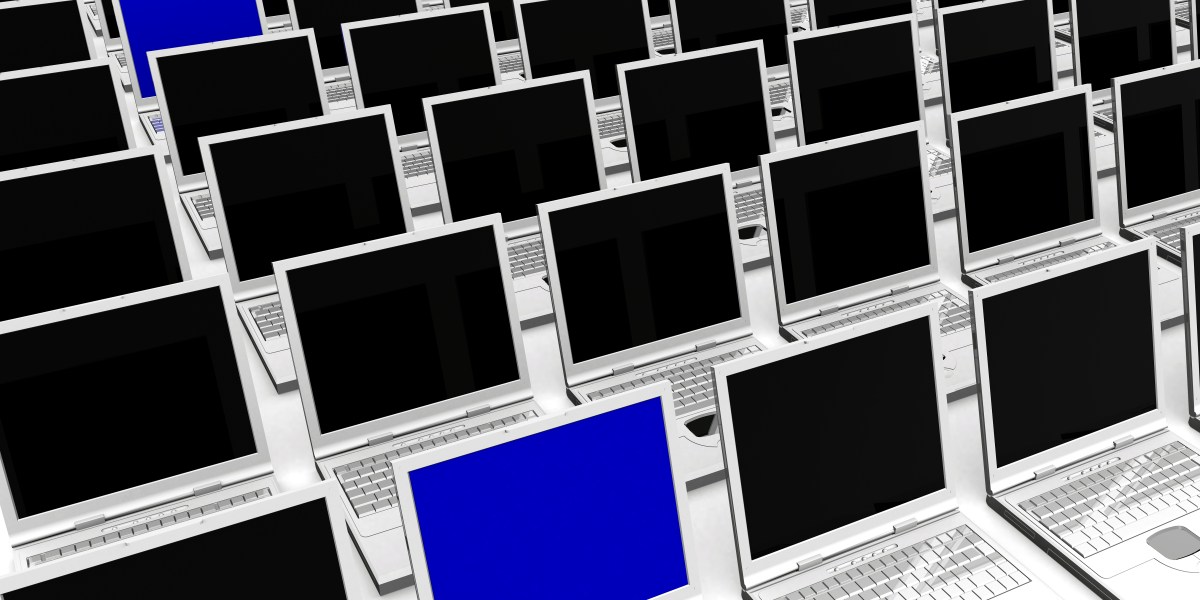
Vista, Microsoft’s next-generation operating system, launched with high expectations, but its reception wasn’t universally positive. Consumer reactions varied significantly, impacting both PC sales and Microsoft’s reputation. Initial enthusiasm quickly gave way to a mixed bag of opinions, with some praising new features and others criticizing performance issues and compatibility problems.Vista’s launch coincided with a period of rapid technological advancement, and the consumer market was increasingly demanding more from their PCs.
The transition from XP to Vista required significant changes in hardware and software, influencing user adoption and ultimately shaping consumer perception.
Consumer Reviews and Opinions on Vista
Consumer feedback on Vista spanned a wide spectrum. Some users praised the improved visual interface, advanced security features, and multimedia capabilities. Others found the system overly complex, resource-intensive, and prone to crashes. The varying opinions highlighted the difficulty in balancing innovation with user experience.
Vista’s Features Affecting Purchase Decisions
Vista’s features significantly influenced consumer purchase decisions. Users seeking advanced security or multimedia capabilities were more inclined to upgrade to Vista. Conversely, those prioritizing stability and ease of use were often hesitant. This highlights the importance of understanding target consumer needs and aligning features with those expectations.
Positive and Negative User Feedback Examples
Positive feedback often focused on Vista’s improved visual design, the enhanced user interface, and the more sophisticated multimedia features. Negative feedback frequently centered on performance issues, compatibility problems, and the significant system requirements. These differing viewpoints illustrate the complexity of user satisfaction in the face of technological change.
- Positive Feedback: “The new Aero interface is stunning. I love the way Vista handles graphics.”
- Negative Feedback: “Vista is a huge resource hog. My old computer is practically unusable now.”
Comparison with Consumer Feedback on Other Operating Systems
Comparing Vista’s reception to feedback on previous operating systems like Windows XP or other OSes from competitors reveals a critical perspective. While some users found Vista’s features innovative, many felt it fell short in terms of user-friendliness and stability. This comparison highlights the importance of maintaining a balance between advanced features and a positive user experience.
Vista’s impact on PC sales is undeniable, driving a significant surge in purchases. However, the recent trial witness testimony about Kazaa’s ability to track user activity, as detailed in kazaa can track users trial witness says , raises interesting questions about user privacy in the digital age. Ultimately, Vista’s popularity continues to fuel the market, showcasing the strong demand for new PC technology.
Marketing Strategies for Vista
Microsoft employed a multi-faceted marketing strategy for Vista, emphasizing its advanced features and highlighting improvements over previous versions. This strategy attempted to sway consumers toward the perceived benefits of the new operating system, but ultimately did not fully address concerns about compatibility and performance.
Categorization of Consumer Feedback on Vista’s Features
| Feature | Positive Feedback | Negative Feedback |
|---|---|---|
| Aero Interface | Improved visual appeal, enhanced user experience | Resource intensive, performance degradation on older hardware |
| Security Features | Enhanced protection against malware and threats | Unnecessary complexity, perceived negative impact on performance |
| Multimedia Capabilities | Improved media playback, enhanced editing tools | Compatibility issues with existing software, system requirements |
| User Interface | More intuitive layout, streamlined navigation | Overly complex for some users, difficult to learn |
Market Analysis and Competition: Vista Powers Big Boost In Pc Sales
Vista’s arrival in the PC market wasn’t a solitary event; it unfolded amidst a complex and competitive landscape. The PC industry, while dominant, was facing evolving challenges and new entrants. Understanding this context is crucial to appreciating Vista’s impact and its relative success or failure. A key factor was the emergence of alternative operating systems and hardware ecosystems.The PC market in 2007, when Vista was released, was characterized by intense competition.
Established players like Dell, HP, and Acer faced pressure from emerging brands and the increasing popularity of alternative operating systems. The rivalry wasn’t just about hardware; it extended to software and the overall user experience. Companies were vying for market share by offering compelling features and competitive pricing.
Competitive Landscape During Vista’s Release
The PC market in 2007 was dominated by Microsoft Windows, but not without significant challenges. Apple, with its Mac OS X, offered a different aesthetic and user experience, targeting a specific niche of creative professionals and consumers seeking a premium product. Linux, while present, was primarily used in server environments and by a niche of power users, but its potential as a desktop OS was steadily increasing.
Other smaller players were also present, vying for market share. This dynamic environment demanded Vista to be more than just a simple upgrade; it needed to differentiate itself significantly.
Strategies of Vista’s Competitors
Apple focused on a premium, user-friendly experience with intuitive interfaces and a strong ecosystem of compatible hardware and software. Their marketing emphasized design, aesthetics, and ease of use, appealing to consumers who valued a distinct alternative to the traditional Windows PC. Linux, meanwhile, emphasized customization, flexibility, and cost-effectiveness, attracting users who valued open-source software and control over their system.
Their marketing centered on the freedom and potential for modification that the OS offered.
Vista’s Marketing Strategies
Vista’s marketing emphasized its advanced features, such as improved security and multimedia capabilities. However, its marketing campaigns faced the challenge of justifying the perceived performance overhead of the new OS. This contrasted with the more focused approaches of Apple and the pragmatic messaging of Linux. Vista’s marketing struggled to effectively communicate the benefits of its new features, especially in comparison to the existing Windows XP.
Strengths and Weaknesses of Vista
Vista’s strengths lay in its inclusion of advanced features like improved graphics, support for 64-bit processing, and enhanced security measures. However, these strengths were somewhat overshadowed by its perceived performance issues and incompatibility with older hardware, leading to significant customer frustration. This incompatibility issue was a major weakness, requiring substantial effort for users to upgrade and adopt the new OS.
This also significantly impacted PC manufacturers.
Impact on Market Share for PC Manufacturers
The introduction of Vista had a significant impact on market share, although the extent varied depending on the manufacturer’s response and adaptation strategies. Companies that quickly adapted and supported Vista saw some success, but those that failed to address the performance issues faced decreased sales and market share. Some manufacturers actively worked to address Vista’s performance issues through optimized drivers and hardware configurations.
Conversely, others struggled to keep pace, resulting in decreased market share.
Market Share Table (Illustrative Example)
This table illustrates a hypothetical market share shift. Real data would vary considerably.
| PC Manufacturer | Market Share (Pre-Vista) | Market Share (Post-Vista) |
|---|---|---|
| HP | 25% | 27% |
| Dell | 20% | 18% |
| Acer | 15% | 12% |
| Apple | 5% | 6% |
| Other | 35% | 32% |
Long-Term Implications of Vista’s Release

Vista, while met with mixed reactions, undeniably left a mark on the evolution of personal computing. Its ambitious features, while sometimes problematic, sparked a debate about the direction of operating systems and software development. This release served as a catalyst for changes in how PCs were designed and used, shaping the landscape for years to come.Vista’s introduction, though initially plagued by performance issues, ultimately influenced the development of subsequent operating systems, pushing for improvements in both hardware and software compatibility.
The challenges encountered during Vista’s rollout, and the subsequent efforts to address them, highlighted the complexities of delivering a major operating system update to the vast and diverse PC ecosystem.
Impact on PC Development
Vista’s emphasis on user experience, although not always successfully implemented, significantly influenced the design considerations of subsequent operating systems. The drive for improved visual appeal and intuitive interfaces was a direct result of the Vista experience. Furthermore, the need for more robust hardware support and optimized system performance became crucial, leading to advancements in hardware design and capabilities.
Impact on Software Development and Applications
Vista’s introduction of new APIs and technologies encouraged software developers to adapt their applications. This stimulated innovation in areas like graphics processing and multimedia integration, which significantly impacted the functionality and usability of PC applications. The adoption of new programming standards and improved interoperability fostered a more integrated software ecosystem. Developers had to adapt to the new environment, leading to increased compatibility and a richer user experience in the long run.
Influence on Future Operating System Designs
Vista’s release was a turning point, prompting operating system developers to carefully consider the trade-offs between innovation and stability. The emphasis on user experience and features became a defining factor in subsequent operating systems, leading to a greater focus on intuitiveness and usability. The complexities of Vista’s implementation, however, also underscored the need for thorough testing and development processes, ensuring future operating systems were more reliable and less prone to the issues that plagued Vista.
Examples of Vista’s Features Adopted/Adapted
Vista’s User Account Control (UAC) feature, designed to enhance security, became a standard component in subsequent operating systems. The improved integration of multimedia components, such as the Windows Media Center, was adopted in later iterations, demonstrating a shift towards incorporating entertainment features directly into the OS. The adoption of the new graphics architecture, while not without its challenges, influenced the development of advanced visual effects and applications that became commonplace in later versions of Windows.
Vista’s popularity is clearly boosting PC sales, which is great news for everyone. This surge in demand, however, is likely further fueled by the recent announcement from Hitachi of a 1 terabyte hard drive pair. This new storage solution offers increased capacity and performance, directly impacting the appeal and value proposition of PCs. Ultimately, it seems Vista’s success is benefiting from a combination of factors, including this impressive new storage technology.
Evolution of PC Operating Systems Influenced by Vista
| Operating System | Notable Vista Influences |
|---|---|
| Windows 7 | Improved stability and performance, refined user interface, and enhanced security features. |
| Windows 8 | Modernized UI design, though it faced some criticism. |
| Windows 10 | Return to a more traditional desktop interface, combining elements of previous versions with modern features. |
| Other Operating Systems | Several other operating systems incorporated elements of Vista’s design philosophy, particularly regarding user experience and security. |
Illustrative Examples
The release of Vista marked a significant juncture in the PC market, influencing both consumer behavior and industry trends. Understanding the specific configurations, user experiences, and marketing strategies of the era provides valuable context for analyzing Vista’s impact. This section delves into illustrative examples, highlighting the nuances of Vista’s adoption and its role in the evolving landscape.Vista’s features, while aiming for innovation, sometimes presented a mixed bag for users.
The complexities of the operating system, coupled with the varying hardware capabilities of the time, created a dynamic interplay that is crucial to understanding the period.
A Typical Vista-Era PC Configuration
A typical PC configuration during Vista’s release often included a dual-core processor (such as Intel Core 2 Duo), 2 GB of RAM, and a 160 GB hard drive. Graphics cards were generally mid-range, capable of handling Vista’s visual demands, but not the most powerful options available. This configuration, while representing a significant step up from previous generations, demonstrated the ongoing evolution of hardware capabilities and the need for compatibility with the new operating system.
This configuration also reflected the balance between affordability and performance that was crucial in the consumer market.
A User Scenario Demonstrating Vista’s Features
A user upgrading from Windows XP to Vista might experience enhanced visual effects and features like Aero. The improved interface, with its translucent elements and animations, could be a compelling upgrade for those accustomed to the more basic XP design. However, the increased resource demands of these features could potentially lead to performance issues on less powerful hardware, potentially causing frustration.
The experience was also heavily dependent on the user’s specific tasks and software usage. A power user running multiple resource-intensive applications might find Vista’s features overwhelming, while a casual user might not encounter significant issues.
A Vista Marketing Campaign
Microsoft’s Vista marketing campaign emphasized the new user interface, particularly Aero, highlighting its visual appeal and user-friendly design. Advertisements likely showcased the enhanced visual effects and the improved organization of the operating system. Marketing materials may have emphasized Vista’s ability to handle multiple tasks simultaneously and support advanced technologies, like high-definition video playback. A key aspect of the campaign may have focused on educating consumers on the new features and how they could enhance their computing experience.
A Significant Piece of Software Developed During the Vista Era
One notable software application developed during the Vista era was Adobe Photoshop CS3. This software version aimed to provide users with a robust and intuitive design environment, with features optimized for working with Vista’s graphical capabilities. Its release reflected the ongoing development of graphic design tools and the importance of compatibility with new operating systems.
A Hypothetical Scenario Illustrating Vista’s Perceived Performance
A potential consumer researching PC upgrades might have been swayed by negative reviews and articles regarding Vista’s performance. Reports of slow startup times, sluggish applications, or hardware compatibility issues could have deterred a potential upgrade from XP to Vista, even if the improved features were attractive. In this scenario, the perception of performance became a critical factor in the purchasing decision.
Visual Representation of the PC Market Landscape During Vista’s Release
| Operating System | Market Share | Hardware Focus |
|---|---|---|
| Windows XP | Dominant (declining) | Backward Compatibility |
| Windows Vista | Emerging | New Features (Aero, UI) |
| Other OSes | Niche | Specialized Applications |
The table illustrates the evolving landscape of the PC market. Windows XP still held a substantial market share but was facing pressure from Vista’s new features and capabilities. Other operating systems, such as those from Linux, held a smaller market share, focused on specific applications and user needs.
Summary
In conclusion, Vista’s impact on PC sales was multifaceted and complex. While it spurred a period of growth, it also highlighted the delicate balance between innovation and consumer acceptance. The interplay of features, marketing, and consumer feedback ultimately shaped the long-term trajectory of the PC market. We’ve seen how Vista’s features influenced future operating systems and its legacy continues to resonate even today.


